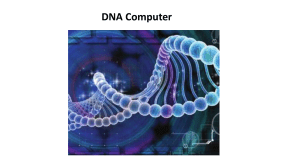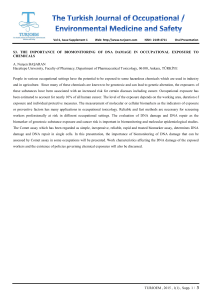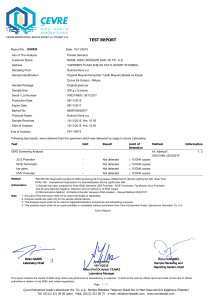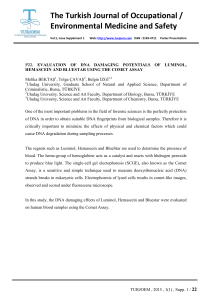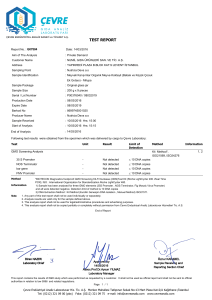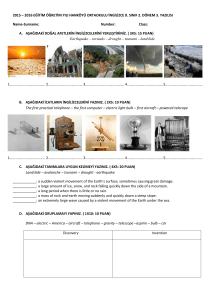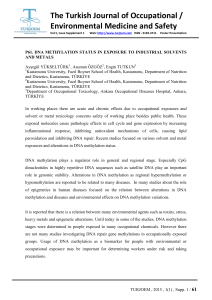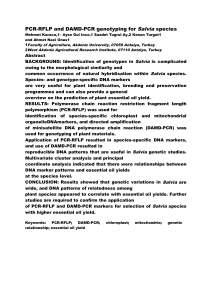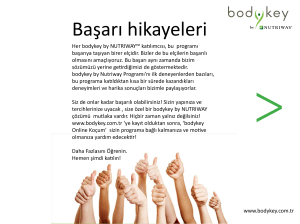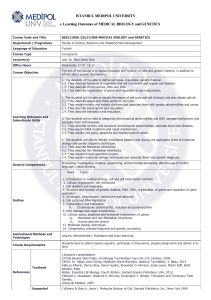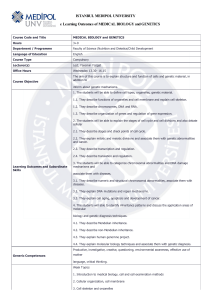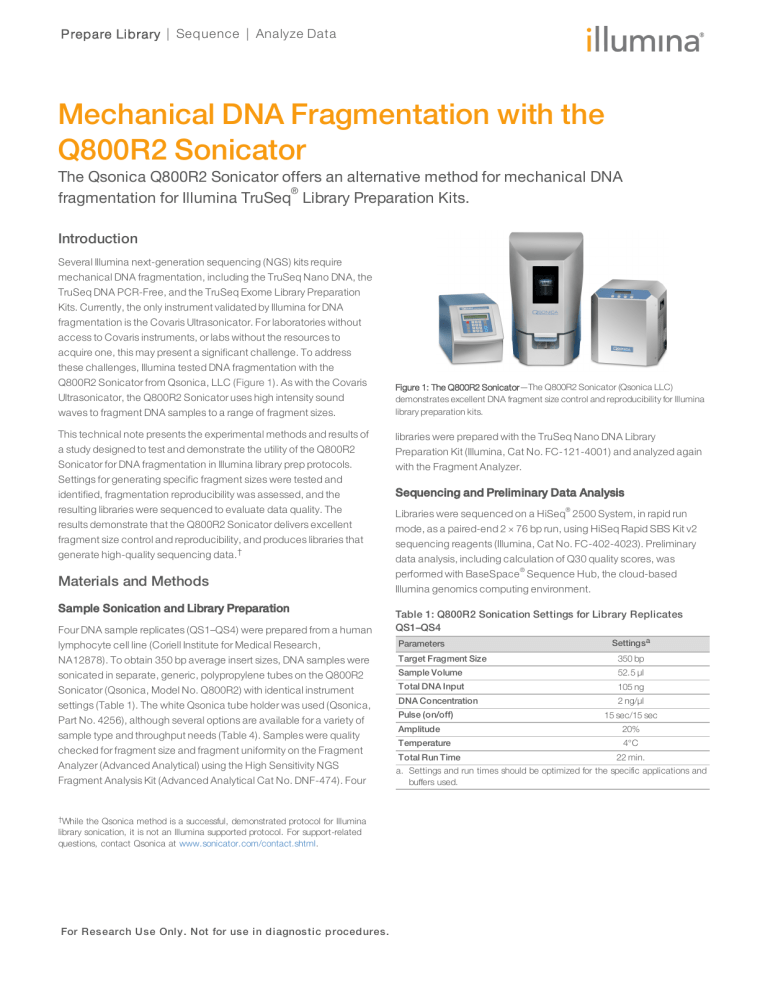
P rep are Li b rary | Seq uence | Analyze Data
Mechanical DNA Fragmentation with the
Q800R2 Sonicator
The Qsonica Q800R2 Sonicator offers an alternative method for mechanical DNA
®
fragmentation for Illumina TruSeq Library Preparation Kits.
Introduction
Several Illumina next-generation sequencing (NGS) kits require
mechanical DNA fragmentation, including the TruSeq Nano DNA, the
TruSeq DNA PCR-Free, and the TruSeq Exome Library Preparation
Kits. Currently, the only instrument validated by Illumina for DNA
fragmentation is the Covaris Ultrasonicator. For laboratories without
access to Covaris instruments, or labs without the resources to
acquire one, this may present a significant challenge. To address
these challenges, Illumina tested DNA fragmentation with the
Q800R2 Sonicator from Qsonica, LLC (Figure 1). As with the Covaris
Ultrasonicator, the Q800R2 Sonicator uses high intensity sound
waves to fragment DNA samples to a range of fragment sizes.
This technical note presents the experimental methods and results of
a study designed to test and demonstrate the utility of the Q800R2
Sonicator for DNA fragmentation in Illumina library prep protocols.
Settings for generating specific fragment sizes were tested and
identified, fragmentation reproducibility was assessed, and the
resulting libraries were sequenced to evaluate data quality. The
results demonstrate that the Q800R2 Sonicator delivers excellent
fragment size control and reproducibility, and produces libraries that
generate high-quality sequencing data.†
Materials and Methods
Sample Sonication and Library Preparation
Four DNA sample replicates (QS1–QS4) were prepared from a human
lymphocyte cell line (Coriell Institute for Medical Research,
NA12878). To obtain 350 bp average insert sizes, DNA samples were
sonicated in separate, generic, polypropylene tubes on the Q800R2
Sonicator (Qsonica, Model No. Q800R2) with identical instrument
settings (Table 1). The white Qsonica tube holder was used (Qsonica,
Part No. 4256), although several options are available for a variety of
sample type and throughput needs (Table 4). Samples were quality
checked for fragment size and fragment uniformity on the Fragment
Analyzer (Advanced Analytical) using the High Sensitivity NGS
Fragment Analysis Kit (Advanced Analytical Cat No. DNF-474). Four
†While
the Qsonica method is a successful, demonstrated protocol for Illumina
library sonication, it is not an Illumina supported protocol. For support-related
questions, contact Qsonica at www.sonicator.com/contact.shtml.
For Research Use Only. Not for use in diagnostic procedures.
Figure 1: The Q800R2 Sonicator—The Q800R2 Sonicator (Qsonica LLC)
demonstrates excellent DNA fragment size control and reproducibility for Illumina
library preparation kits.
libraries were prepared with the TruSeq Nano DNA Library
Preparation Kit (Illumina, Cat No. FC-121-4001) and analyzed again
with the Fragment Analyzer.
Sequencing and Preliminary Data Analysis
®
Libraries were sequenced on a HiSeq 2500 System, in rapid run
mode, as a paired-end 2 × 76 bp run, using HiSeq Rapid SBS Kit v2
sequencing reagents (Illumina, Cat No. FC-402-4023). Preliminary
data analysis, including calculation of Q30 quality scores, was
®
performed with BaseSpace Sequence Hub, the cloud-based
Illumina genomics computing environment.
Table 1: Q800R2 Sonication Settings for Library Replicates
QS1–QS4
Parameters
Settingsa
Target Fragment Size
350 bp
Sample Volume
52.5 µl
Total DNA Input
105 ng
DNA Concentration
Pulse (on/off)
Amplitude
Temperature
Total Run Time
2 ng/µl
15 sec/15 sec
20%
4°C
22 min.
a. Settings and run times should be optimized for the specific applications and
buffers used.
P rep are Li b rary | Seq uence | Analyze Data
Figure 2: Q800R2 Fragmentation Reproducibility— A. DNA samples QS1–QS4 were sonicated by the Q800R2 Sonicator then assessed with the Fragment Analyzer. B.
Libraries were prepared with the TruSeq Nano DNA Library Prep Kit and assessed with the Fragment Analyzer.
Table 3: Sequencing Data Quality
Results
Statisticsa
QS1
QS2
QS3
QS4
Fragment Size Distribution and Fragmentation
Reproducibility
Percent Aligned
94.9 %
94.7 %
94.6 %
95.1%
Percent ≥ Q30
94.5 %
94.4 %
94.4 %
94.8%
Median Fragment Length
365 bp
351 bp
364 bp
359 bp
To evaluate fragment size distribution and reproducibility of
fragmentation, QS1–QS4 samples were assessed with the Fragment
Analyzer after Q800R2 sonication, and again after TruSeq Nano
library preparation (Table 2). The postsonication QS1–QS4 samples
and the postlibrary prep samples demonstrated highly
a. Statistics shown are an average of Read 1 and Read 2 data.
Table 2: Average Insert Size and Library Size for Replicates
QS1–QS4
QS1
QS2
QS3
QS4
Avg Size After Sonication
421 bp
428 bp
426 bp
423 bp
Avg Size After Library Prep
553 bp
544 bp
564 bp
554 bp
reproducible average fragment sizes (Figure 2). The Fragment
Analyzer results (postsonication samples) demonstrated a broad size
range, as is typically seen with Covaris sonication. The average
fragment size for samples QS1–QS4 was ~420 bps. Subsequent
steps in the library preparation process, such as bead-based cleanup steps, narrow the size range further to 350 bp.
Summary
The Q800R2 Sonicator offers a second method for DNA
fragmentation in Illumina library prep kit protocols. The Q800R2
Sonicator demonstrates excellent reproducibility and generates
libraries with high-quality sequencing data results. Although the
TruSeq Nano DNA, TruSeq DNA PCR-Free, and TruSeq Exome
Library Prep Kits currently use the Covaris Ultrasonicator for DNA
fragmentation, the results of this study show that Q800R2 sonication
offers a reliable alternative, adding greater flexibility to the Illumina
library preparation workflow.
Table 4: Qsonica Sample Tube Holders
Descriptiona
Sample Tube Size
Part Number
8 Tube Holder (white)
1.5 ml polystyrene
(Evergreen)b
4256
Sequencing Data Quality
12 Tube Holder (black)
0.5 ml thin walled PCR
tubes
4255
Sequencing data quality from each library was assessed by Q30
scores and percent alignment metrics. Libraries prepared with
Q800R2 sonication produced reproducible, high-quality data sets,
with all libraries showing ≥ 94% reads aligned and ≥ 94% of reads
≥ Q30 (Table 3).
18 Tube Holder (blue)
0.3 ml thin walled PCR
tubes
4262
12 Tube Holder (grey)
0.5ml brandtech tubes
4263
Q30 score: A Q30 score indicates an error probability (1 in
1000) in base calling.
To learn more about NGS quality scores, read technical
note Understanding Illumina Quality Scores.
a. In addition to the standard tube racks, Qsonica can design and
manufacture custom sample tube racks to meet your specific process
requirements. Visit www.sonicator.com/61-sample-tube-holders.html or
contact a Qsonica representative for more information.
b. Evergreen Scientific: Sample tube Part No. 214-3721-010, Cap Part No.
300-2911-020 are recommended.
To learn more about the Q800R2 Sonicator, visit
www.sonicator.com/19-q800r2-sonicator.html.
Illumina, Inc. • 1.800.809.4566 toll-free (US) • +1.858.202.4566 tel • techsupport@illumina.com • www.illumina.com
For Research Use Only. Not for use in diagnostic procedures.
© 2017 Illumina, Inc. All rights reserved. Illumina, BaseSpace, HiSeq, TruSeq, and the pumpkin orange color are trademarks of Illumina, Inc. and/or its affiliate(s)
in the U.S. and/or other countries. All other names, logos, and other trademarks are the property of their respective owners. Pub. No. 770-2016-030-A.


